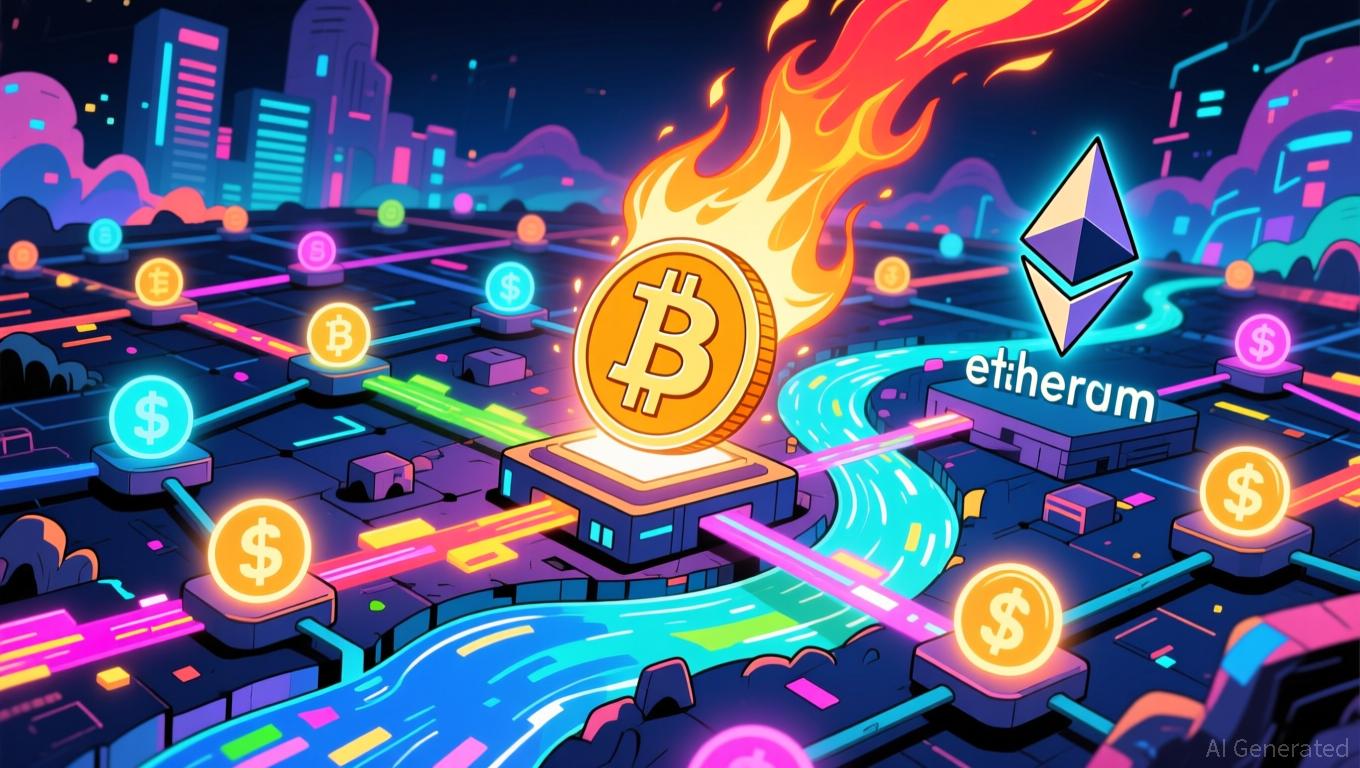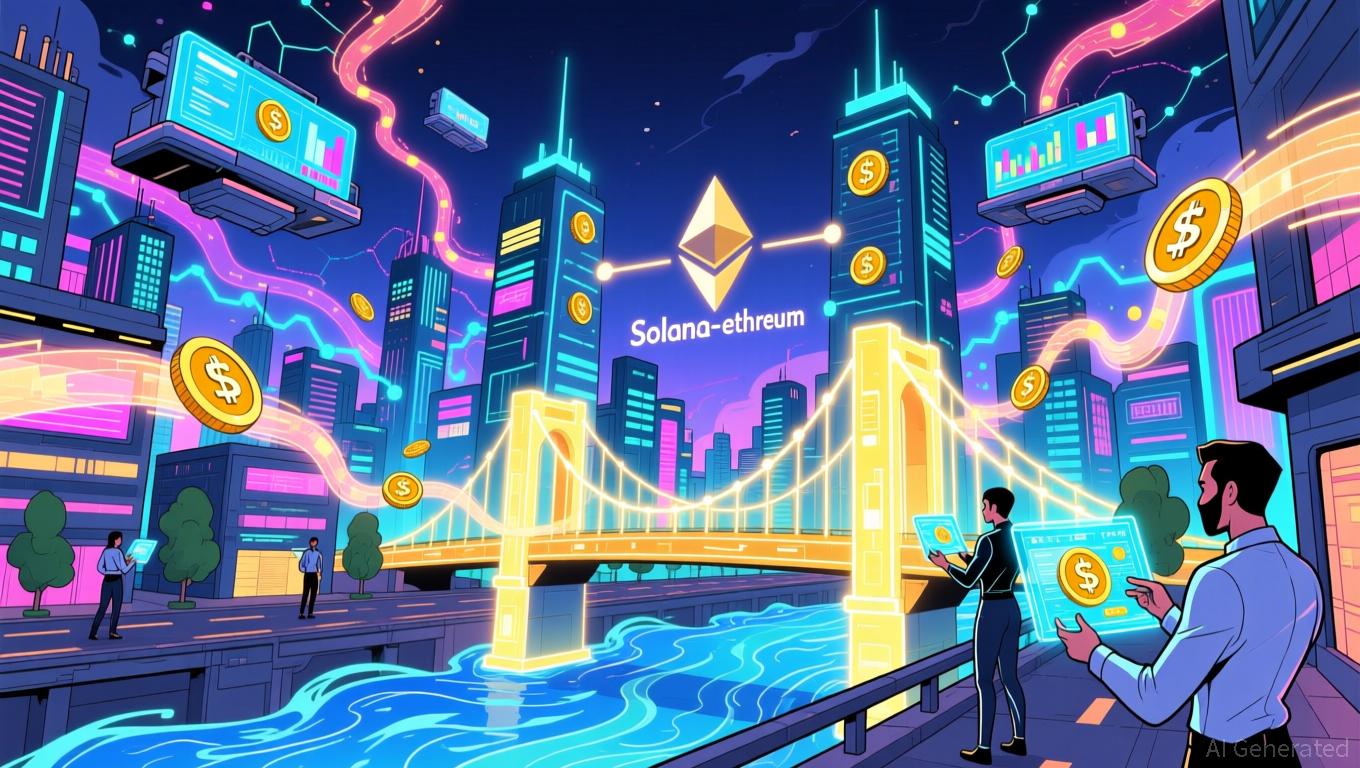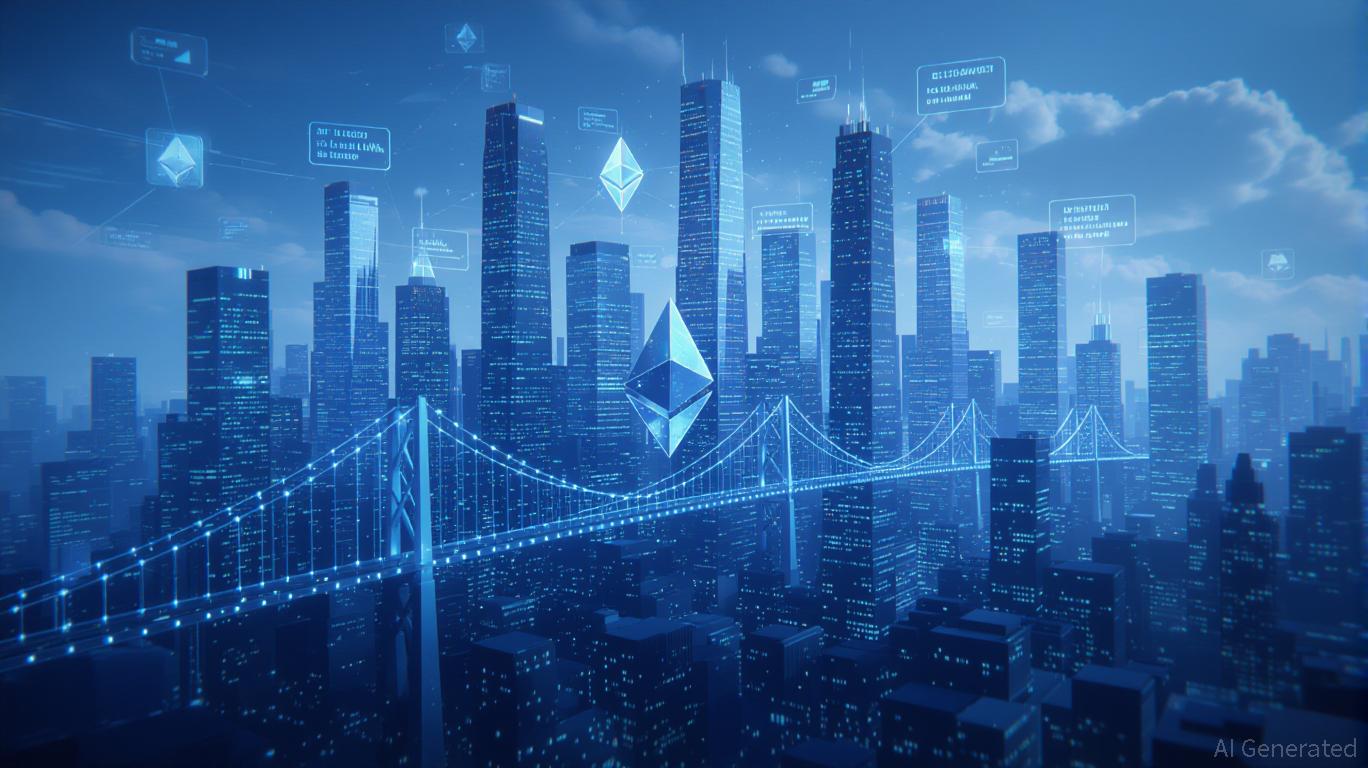Bitcoin Updates: Challenges in Blockchain Infrastructure Drive Growth of Mixed Sustainability Approaches
- Blockchain networks show mixed fee revenue, with only 11 surpassing $100K weekly thresholds, highlighting structural inefficiencies and speculative challenges. - Lumint's hybrid staking model combines AI-driven tools with decentralized rewards to address PoW/PoS flaws, aiming for sustainability and reduced energy waste. - Bitcoin rebounded to $87,000 amid 2% market growth, but extreme fear persists (index at 20), with $380M in liquidations and mixed retail sentiment. - Hybrid solutions like Lumint priori
Blockchain Network Fee Revenues Show Divergent Trends
Recent industry reports reveal that just 11 blockchain networks have managed to generate over $100,000 in weekly transaction fees. This highlights ongoing structural challenges within the sector, where inefficiencies and speculative trading continue to hinder sustainable growth. While leading cryptocurrencies such as Bitcoin and Ethereum have experienced price recoveries, new approaches like hybrid node staking are being introduced to tackle these persistent issues.
Market Movements: Bitcoin and Major Tokens
Bitcoin's value surged to $87,000 during early Tuesday trading, bouncing back from a volatile week as the overall crypto market rose by 2% to reach $3.09 trillion. The rebound was largely fueled by increased accumulation from large investors, though mid-tier holders continued to sell, making it difficult to confirm a lasting trend reversal. Analysts observed that retail investor sentiment toward Bitcoin remained balanced, with significant discussion on platforms like Stocktwits.
Among the top-performing tokens, XRP, Solana, and Ethereum led the way. XRP, in particular, jumped 7.2% to $2.21, driven by strong interest from retail traders.
Market Sentiment and Liquidations
Despite recent gains, the overall market sentiment remains cautious. The Crypto Fear and Greed Index climbed to 20, still well below the optimism threshold of 50, indicating a climate of "extreme fear." In the past 24 hours, liquidations totaled $380 million, mostly from short positions, underscoring the prevailing risk aversion. Although Ethereum and Solana saw price increases, retail sentiment for both remained bearish. Meanwhile, the launch of Dogecoin's ETF attracted $1.41 million in trading volume, pointing to rising institutional interest in alternative tokens.

Innovative Solutions: Lumint’s Hybrid Node Staking
The introduction of Lumint’s hybrid node staking model at the AI & Blockchain Conference in Seoul further highlighted the sector’s structural hurdles. Developed by IntelliQuant, this model seeks to resolve inefficiencies found in both proof-of-work and proof-of-stake systems by merging decentralized reward structures with AI-powered investment strategies. According to CEO Lee Jong-kwon, Lumint offers a "sustainable and equitable" answer to challenges such as resource consumption, centralization, and liquidity risks. The platform encourages long-term involvement through its node-purchase system and 900-day staking incentives, while smart mining algorithms aim to cut down on energy use.
Bridging Decentralization and Mainstream Adoption
Lumint’s hybrid approach also features Web3 scalability and global accessibility, including dynamic translation and simplified login processes, to make decentralized technology more approachable for a wider audience. By connecting staking rewards with AI-driven investment services, Lumint seeks to deliver additional financial benefits to users, addressing the common issue of limited real-world utility in blockchain projects.
Shifting Priorities in the Blockchain Industry
Although transaction fee revenue remains a vital indicator of network health, the industry is increasingly turning its attention to innovative models that emphasize sustainability and user participation. With only a small number of networks achieving significant fee generation, platforms like Lumint are at the forefront of a movement toward hybrid solutions that strive for a balance of efficiency, fairness, and scalability in the rapidly evolving crypto world.
Disclaimer: The content of this article solely reflects the author's opinion and does not represent the platform in any capacity. This article is not intended to serve as a reference for making investment decisions.
You may also like
Bitcoin Updates: Bitcoin Faces 23.6 Fib Level—Could Past Trends Spark an Altcoin Recovery?
- Bitcoin dominance fell to 59% at the 23.6 Fibonacci level, signaling potential altcoin rotation amid ETF outflows and price declines. - Corporate Bitcoin accumulation grows, with Hyperscale Data holding $70.5M in Bitcoin (77% of market cap) and Bitfarms holding $156M in Bitcoin. - Analysts highlight macroeconomic pressures and regulatory uncertainty as constraints on altcoin growth despite technical indicators suggesting capital rotation. - Market focus remains on Bitcoin stabilization above $80,000 and

Interoperability Fuels DeFi’s Evolution as Hemi and LI.Fi Connect Blockchains
- Hemi and LI.Fi expanded crosschain interoperability by integrating LI.Fi's bridge and swap API, enabling seamless token transfers across EVM and non-EVM networks like Solana . - Users can now transfer assets like USDC between chains in single transactions using routing tools, reducing friction for DeFi participants and developers. - The partnership standardizes crosschain workflows, eliminating fragmented bridge solutions while supporting liquidity aggregation across EVM, Solana, and alt-VMs. - By stream

Vitalik Buterin's Latest Support for ZK Technology and What It Means for the Cryptocurrency Industry
- Vitalik Buterin is driving a blockchain shift via ZK tech, enhancing Ethereum's scalability and privacy. - ZK infrastructure's $28B TVL surge highlights projects like zkSync Era and StarkNet boosting DeFi and gaming. - Investors target EVM-compatible ZK rollups and privacy toolkits, aligning with Ethereum's ZK roadmap.

XRP News Today: IMF Cautions That Tokenized Markets Could Face Collapse Without International Cooperation
- IMF warns tokenized markets risk destabilizing flash crashes due to rapid growth and interconnected smart contracts. - XRP highlighted as potential cross-border payment solution but not endorsed, alongside Stellar and Bitcoin-Lightning hybrid models. - Global regulators intensify oversight of tokenized assets, with ESMA, SEC, and central banks addressing governance and liquidity risks. - IMF stresses urgent need for coordinated policy frameworks to prevent fragmentation and systemic vulnerabilities in ev
